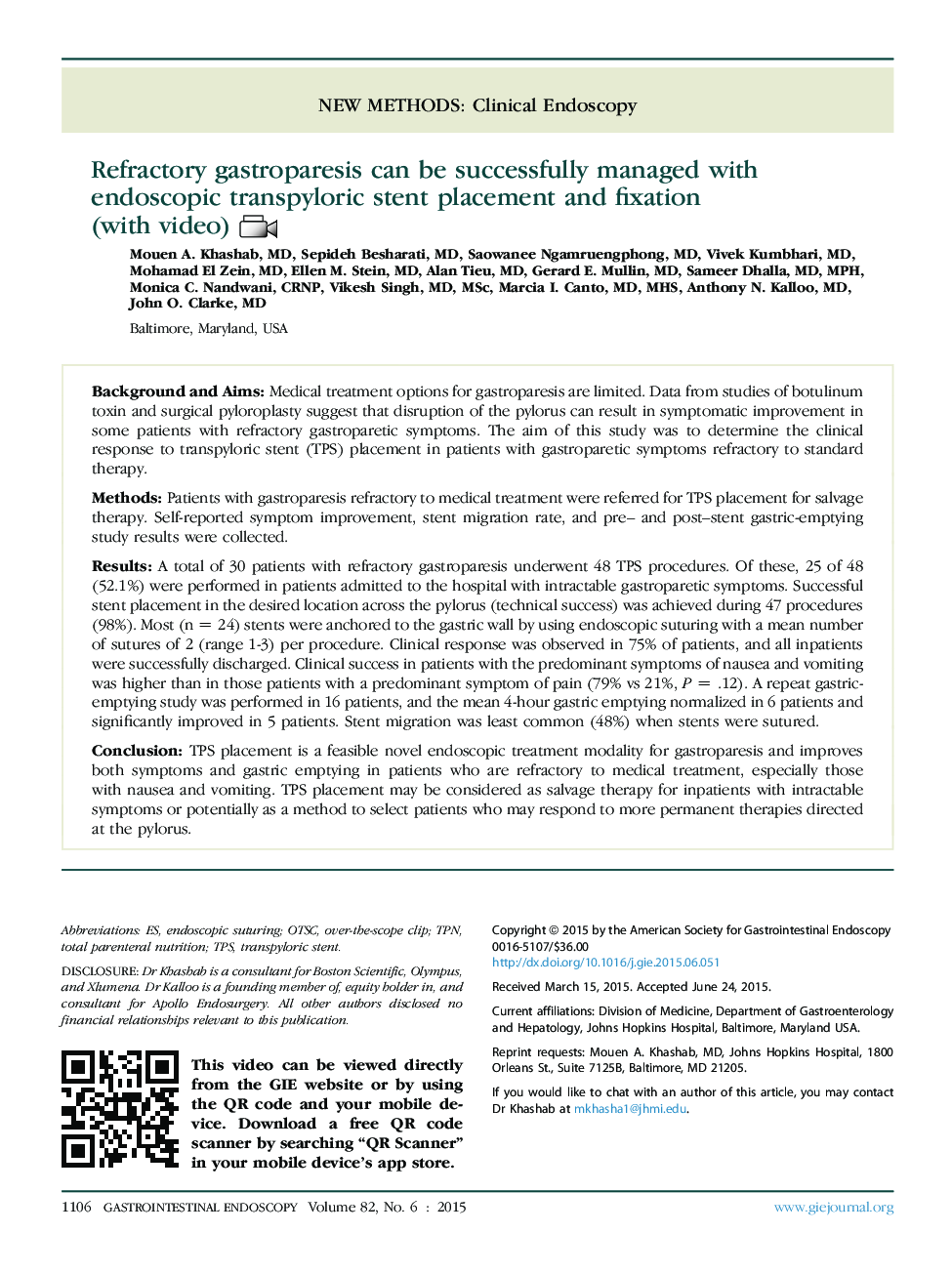| Article ID | Journal | Published Year | Pages | File Type |
|---|---|---|---|---|
| 3302060 | Gastrointestinal Endoscopy | 2015 | 4 Pages |
Background and AimsMedical treatment options for gastroparesis are limited. Data from studies of botulinum toxin and surgical pyloroplasty suggest that disruption of the pylorus can result in symptomatic improvement in some patients with refractory gastroparetic symptoms. The aim of this study was to determine the clinical response to transpyloric stent (TPS) placement in patients with gastroparetic symptoms refractory to standard therapy.MethodsPatients with gastroparesis refractory to medical treatment were referred for TPS placement for salvage therapy. Self-reported symptom improvement, stent migration rate, and pre– and post–stent gastric-emptying study results were collected.ResultsA total of 30 patients with refractory gastroparesis underwent 48 TPS procedures. Of these, 25 of 48 (52.1%) were performed in patients admitted to the hospital with intractable gastroparetic symptoms. Successful stent placement in the desired location across the pylorus (technical success) was achieved during 47 procedures (98%). Most (n = 24) stents were anchored to the gastric wall by using endoscopic suturing with a mean number of sutures of 2 (range 1-3) per procedure. Clinical response was observed in 75% of patients, and all inpatients were successfully discharged. Clinical success in patients with the predominant symptoms of nausea and vomiting was higher than in those patients with a predominant symptom of pain (79% vs 21%, P = .12). A repeat gastric-emptying study was performed in 16 patients, and the mean 4-hour gastric emptying normalized in 6 patients and significantly improved in 5 patients. Stent migration was least common (48%) when stents were sutured.ConclusionTPS placement is a feasible novel endoscopic treatment modality for gastroparesis and improves both symptoms and gastric emptying in patients who are refractory to medical treatment, especially those with nausea and vomiting. TPS placement may be considered as salvage therapy for inpatients with intractable symptoms or potentially as a method to select patients who may respond to more permanent therapies directed at the pylorus.
